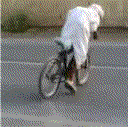Gear Selection
No-one can tell you what gear to use
Just like braking, picking the right gear for a corner, and deciding where to shift up, depends on so many factors that only you can determine which gear to use. Also like braking, the right gear might change during a track session, so you have to be constantly re-evaluating which gear to use as well as re-evaluating your braking points.
So how do you know where to shift?
Shifting up
Deciding where to shift up is pretty straightforward. It takes very little thought, just following a routine that becomes automatic.
The basic principle is to shift up as you hit redline. If you have an engine that runs out of power before redline, shift just as the power starts to drop off.
The exception is if you'd have to shift up and then back down immediately. In that case it's often more efficient just to back off the throttle and hold it near redline rather than spend the time and effort shifting twice.
Shift up on the straights
Shifting up involves backing off the throttle for an instant while shifting. However slight that is, it's still a break in the acceleration. That means that shifting up causes the weight to transfer from the back while you're shifting. If you're in a corner, that messes up your weight transfer management. So you only want to shift when you're on a straight, where a slight bounce won't hurt your stability.
Shifting down = choosing a gear for a corner
Since you only downshift when you're braking, and you only brake for a corner, you only downshift when you're approaching a corner. Since you don't want to shift up while you're still in the corner, you want to pick a gear you can use all the way through your acceleration through the track-out point.
Bikes accelerate hardest in lower gears. Since you want to accelerate hard out of a corner, you want to use the lowest gear you can.
Ideally, therefore, the perfect gear has you shifting up exactly as you hit the track-out point. If you were racing, and the rules allowed, you'd want to customize your gearbox so you had the perfect gear for every corner.
In the real world, you rarely have the perfect gear available. That means you often have to choose between a gear that is too high and one that is too low. In that case, managing weight transfer takes priority, so you have to pick the higher gear so you don't have to shift in the corner.
If you're in a sequence of corners, that might mean you have to shift up before coming into a faster corner, so you don't have to shift before the exit. In this case, you'll probably be shifting before your ideal -- often substantially before the redline. That's called short-shifting, and it's a technique that's well worth mastering.
Shifting in the corner
Sometimes a corner is just so long that you have no choice but to shift while still leaned over. VIR does in fact have one turn where you may well have to shift while still cornering. The Fishhook is such a long uphill turn that without a very broad power band it's likely you'll have to change gear.
You can shift up in a corner without really hurting much, provided it's when you've already unwound your line most of the way. At that stage you're not loading the suspension much with cornering, so it doesn't really hurt to bounce it slightly. Ideally, though, you wouldn't be shifting until at least the track-out point, once you're heading in a straight line.
You need to remember that shifting in the corner upsets the suspension. It's vital to shift quickly, and if the bike is not upright, then straighten it slightly before shifting to reduce the cornering forces; once you've shifted, you can pull it back down some to finish the corner.
For the Fishhook, it might well be worth choosing a higher gear than is ideal for the tightest part of the corner in order to avoid a shift further up the hill. That's something you can experiment with over the course of the day.
Knowing you have the right gear
Like every other track skill, you need to be able to tell when you've picked the right gear, and when you've picked the wrong one. That's pretty easy -- if you have to shift up before the track-out point, the gear's too low. If you don't shift until after your track-out point, the gear's too high.
Like everything else, the technique of finding the right one is to play it safe and work from that direction. Start with a higher gear than you think you need, and work downwards until you reach the right one.
Being familiar with your bike helps in that you probably will know when you can't use a lower gear without running out of revs in a corner, so it's rare that you'll find yourself in too low a gear. If you do, though, remember that safety comes from not bouncing the bike in the corner, and just roll on more gently until you're going straight enough to shift without upsetting the bike.
From TrackDoD Novice Group Orientation
Subscribe to:
Post Comments (Atom)



No comments:
Post a Comment